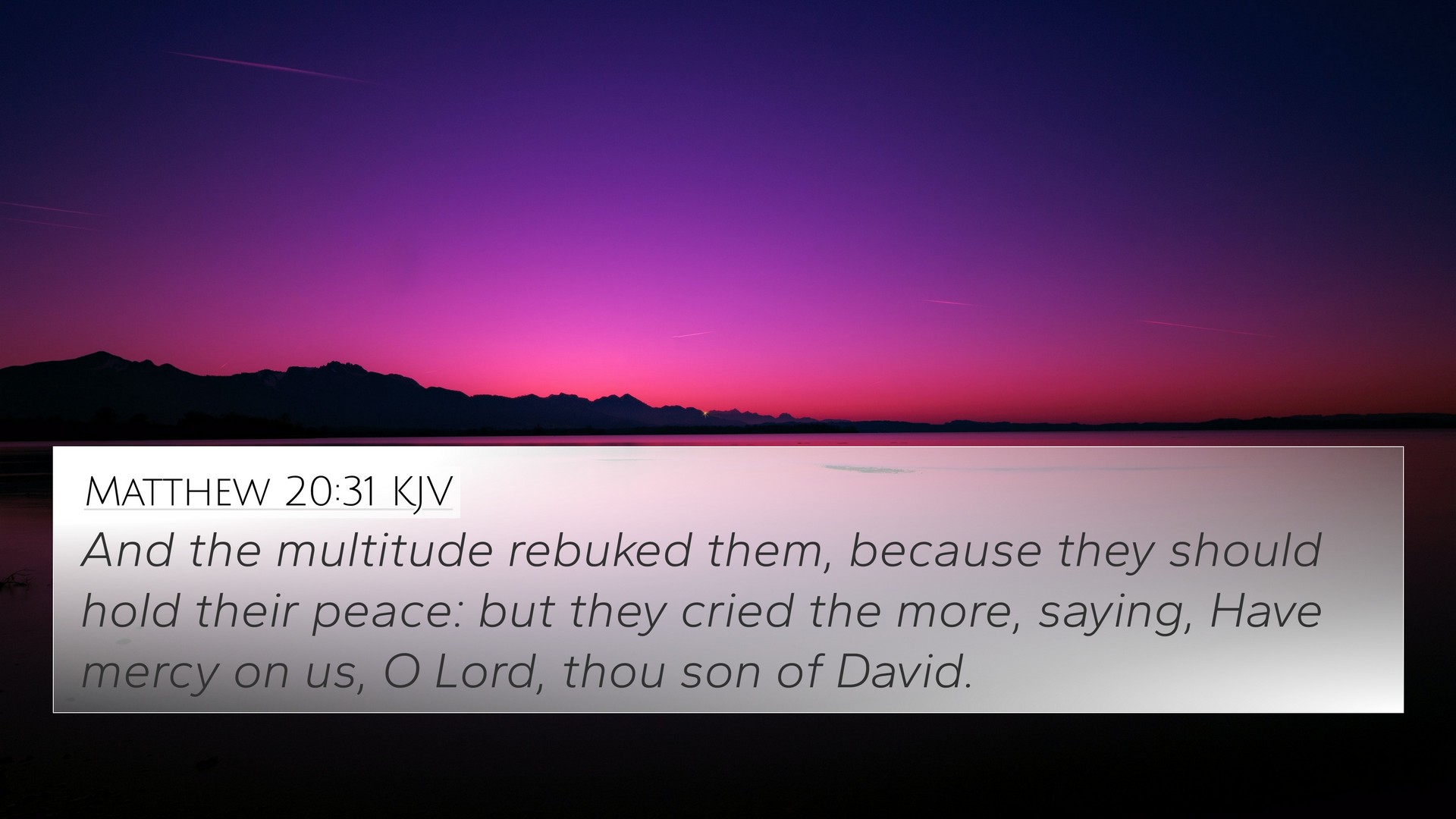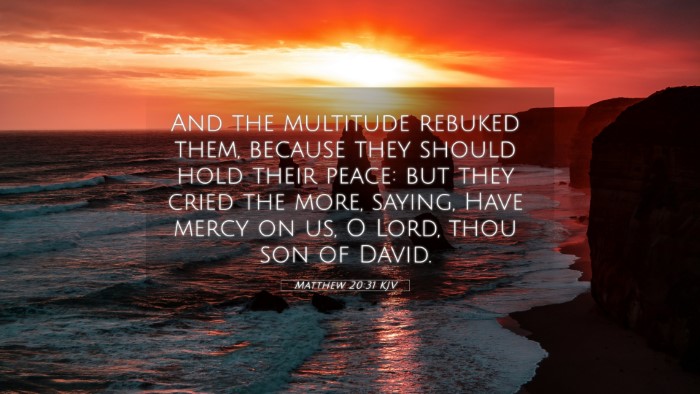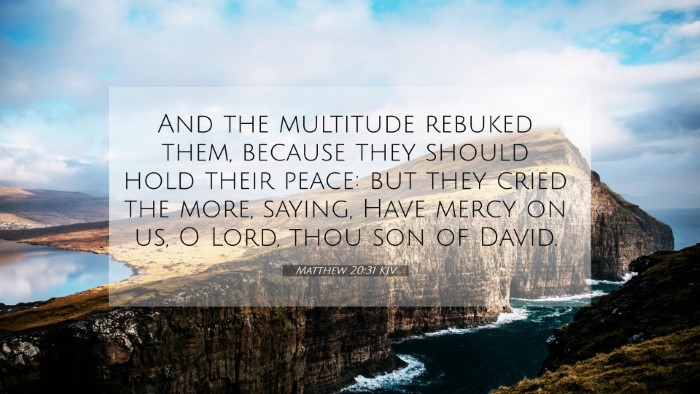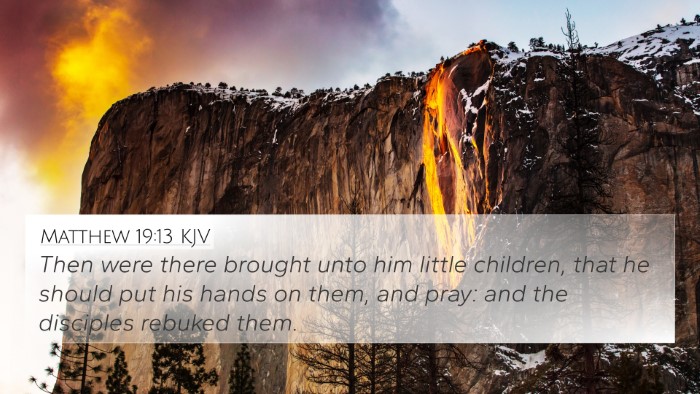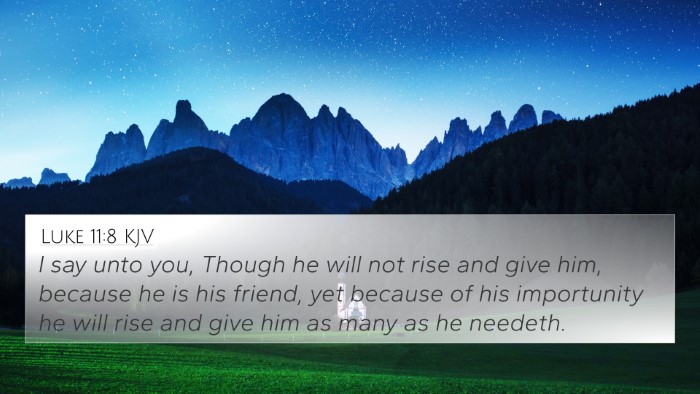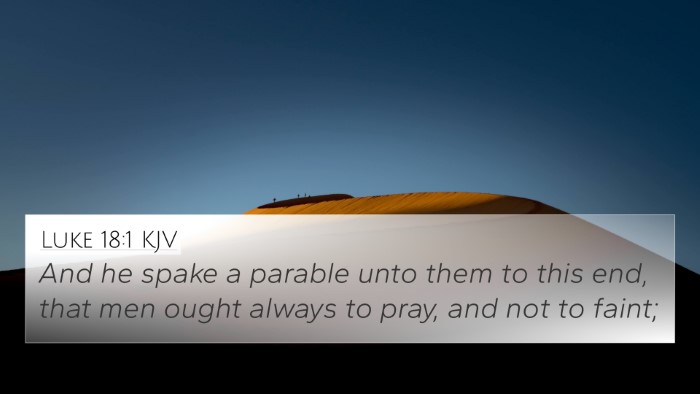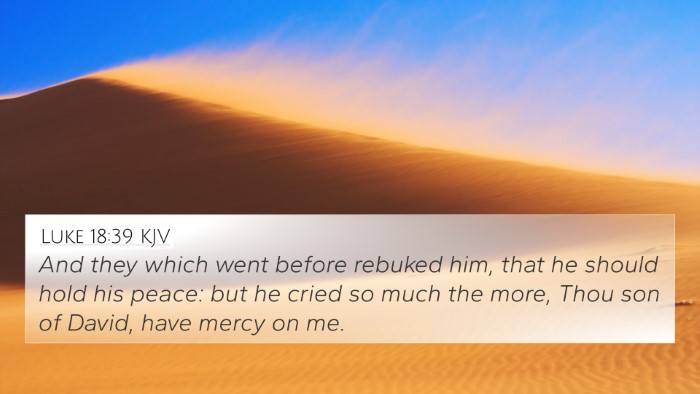Understanding Matthew 20:31
Verse: "And the multitude rebuked them, because they should hold their peace: but they cried the more, saying, Have mercy on us, O Lord, thou Son of David." - Matthew 20:31 (KJV)
Summary and Meaning
Matthew 20:31 describes a critical moment where two blind men cry out to Jesus as He passes by Jericho. Despite being rebuked by the crowd for causing a disturbance, they persist in their plea for mercy. This verse signifies not only the desperation of the blind men but also the recognition of Jesus’ authority and mercy as the "Son of David," a title denoting messianic expectation.
Commentary Insights
- Matthew Henry: Henry emphasizes the faith displayed by the blind men, highlighting that their cries exemplify a deep yearning for healing and divine intervention. Despite societal pressures to remain silent, their insistence demonstrates strong conviction in Jesus' power to heal.
- Albert Barnes: Barnes notes the cultural context, explaining that the blind men’s persistence signifies a profound recognition of Jesus’ messianic identity. He discusses how their actions contrast with the crowd's dismissive attitude, pointing to the theme of faith overcoming obstacles.
- Adam Clarke: Clarke reflects on the implications of calling Jesus the "Son of David," acknowledging its theological significance. He also points out the rhetorical nature of their cries, indicating they understood Jesus’ authority and were therefore bold in their requests.
Thematic Connections
This verse connects with several themes found throughout the Bible:
- Faith and Persistence: Similar instances of faith are found in Luke 18:35-43, where a blind man also calls upon Jesus and ultimately receives sight.
- Jesus as Healer: The motif of healing is prevalent, as seen in Mark 10:46-52, underscoring Jesus' compassion.
- Messianic Titles: The use of "Son of David" links to Isaiah 11:1-10, which prophesies about the Messiah's lineage and kingly authority.
- Divine Mercy: The request for mercy is echoed in Psalms 51:1, demonstrating the universal human need for God's compassion.
- Public Rejection: The crowd’s rebuke resembles the treatment of seekers throughout the Gospels, such as the bleeding woman in Mark 5:25-34.
- Hope and Healing: In Matthew 9:27-31, another account of blind men receiving sight emphasizes faith and Jesus' miraculous power.
- Recognition of Jesus' Authority: This theme resonates with John 1:49, where Nathanael acknowledges Jesus as the Son of God, highlighting personal revelation.
Cross-Referencing Biblical Texts
Below are some significant Bible verse cross-references that relate to Matthew 20:31:
- Mark 10:46-52: The healing of Bartimaeus, illustrating how faith manifests in actions.
- Luke 18:35-43: Another account of blind men receiving sight through faith in Jesus.
- Isaiah 35:5-6: Prophecy about the restoration of sight to the blind in the Messianic age.
- Psalms 30:2: A prayer for God’s healing and mercy, underlying the theme of seeking divine intervention.
- Matthew 9:27-31: Similar story of healing blind men that underscores faith's importance.
- Mark 2:3-12: The faith of friends leading to healing, showcasing communal faith as a powerful force.
- Zechariah 9:9: A prophecy of the Messiah coming humbly, connecting with the blind men's recognition of Jesus' identity.
Conclusion
The cry of the blind men in Matthew 20:31 serves as a poignant reminder of faith's power to pierce through societal barriers and seek divine mercy. Their determination highlights the importance of recognizing Jesus' authority and compassionate nature. For those engaging in cross-referencing Bible studies, this verse offers rich thematic connections that deepen the understanding of Jesus' ministry and character.
This analysis illustrates the profound interrelationship among various biblical texts and themes, helping believers explore the scriptural depths found within the act of persistent faith.
